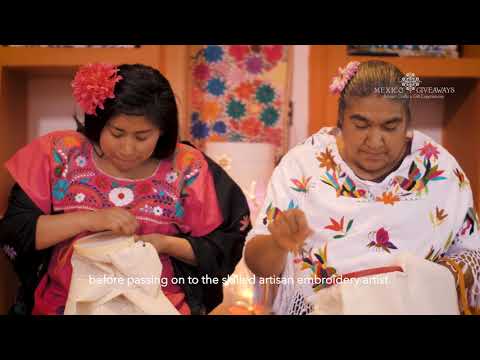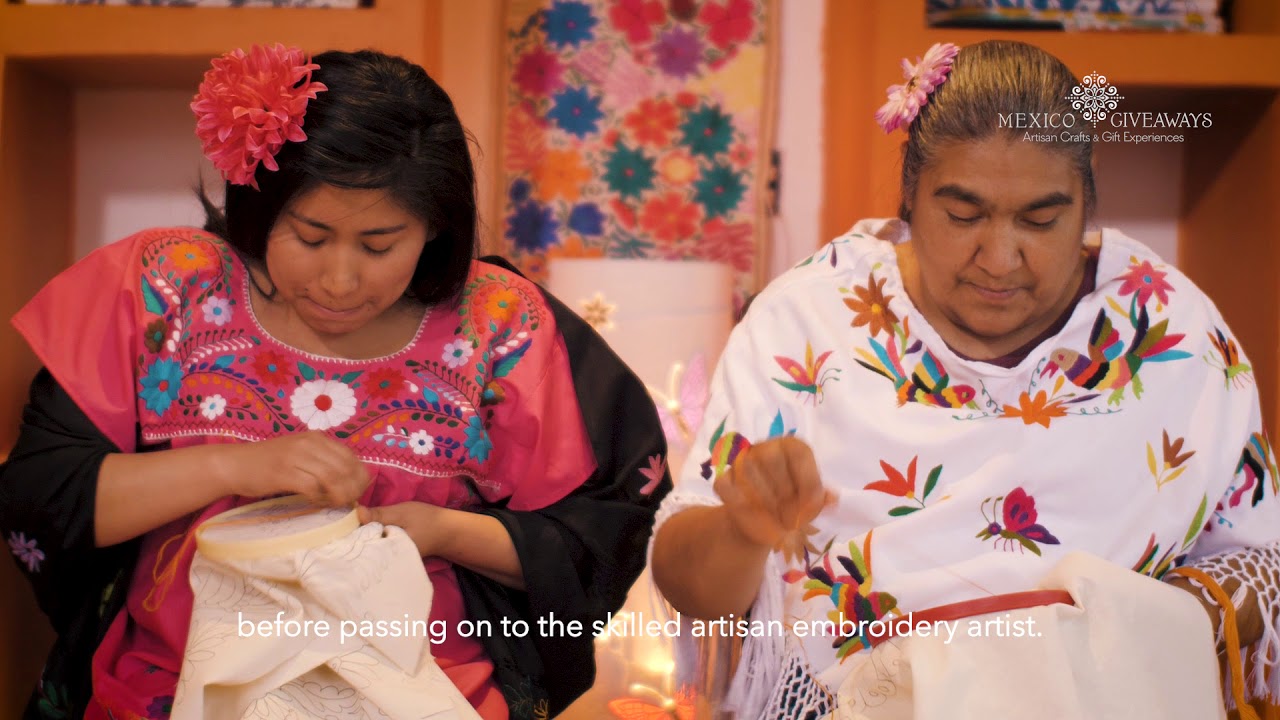Fabric Mexico offers a captivating tapestry of rich cultural heritage and vibrant textile traditions. Immerse yourself in the enchanting world of Mexican fabrics, where bold colors and intricate patterns tell stories of ancient civilizations and contemporary artistry. From the iconic serape blankets to the exquisite huipil garments, each fabric reflects the passion and creativity of local artisans. Explore the diverse range of textiles, such as the renowned rebozo shawls, which effortlessly blend elegance and comfort. Discover the meticulously handwoven zarape rugs that effortlessly infuse warmth and character into any space. Delve into the intricate craftsmanship of embroidered fabrics, where delicate threads bring life to elaborate motifs and traditional designs. With Fabric Mexico, you have the opportunity to embrace the essence of Mexican culture through its remarkable textiles, each piece a testament to the country's rich history and artistic legacy. Whether you seek to adorn your home or express your unique style, these fabrics offer a captivating journey into the heart and soul of Mexico's textile traditions. Experience the beauty, craftsmanship, and cultural significance that Fabric Mexico proudly brings to the world.

Mexican Fabric: A Rich Cultural Heritage
Mexico is known for its vibrant culture, rich history, and beautiful craftsmanship. One aspect of Mexican culture that stands out is its traditional fabric. From intricate embroidery to bold patterns and colors, Mexican fabric is a true reflection of the country's diverse and colorful heritage. In this article, we will explore the fascinating world of Mexican fabric, its history, significance, and the various types that are still popular today.
The History of Mexican Fabric
Mexican fabric has a long and storied history, dating back thousands of years to the pre-Columbian era. The indigenous people of Mexico, such as the Aztecs and Mayans, were skilled weavers and dyers. They used natural materials like cotton, agave fibers, and bark to create their fabrics. These textiles were not only used for clothing but also had ritual and symbolic significance.
When the Spanish conquered Mexico in the 16th century, they introduced new materials and techniques to the indigenous weavers. European fabrics like silk and wool were incorporated into Mexican textile production, resulting in a fusion of indigenous and European styles. Over time, Mexican fabric became known for its vibrant colors, bold patterns, and intricate embroidery.
The Significance of Mexican Fabric
Mexican fabric holds great cultural and symbolic significance. Each pattern and motif tells a story and represents different aspects of Mexican identity and heritage. For example, the Otomi embroidery, characterized by brightly colored animals and plants, is a symbol of the Otomi people's connection to nature and their traditional way of life.
Similarly, the traditional striped fabric known as “manta” represents the humble origins of Mexican clothing. Manta fabric was commonly used by indigenous people as a base cloth for their garments. Today, it is still used in traditional clothing like the popular “huipil” or embroidered blouse.
Popular Types of Mexican Fabric
Mexican fabric encompasses a wide range of styles and techniques. Some of the most popular types include:
Sarape: This iconic Mexican fabric is characterized by its bold stripes and fringe. Sarapes are often used as blankets or shawls and are a symbol of Mexican heritage.
Oaxacan Embroidery: Originating from the state of Oaxaca, this type of embroidery is known for its intricate designs and vibrant colors. Each piece is meticulously hand-stitched, resulting in stunning textile art.
Rebozo: A versatile and traditional Mexican garment, the rebozo is a long rectangular shawl worn by women. It can be used as a fashion accessory, baby carrier, or even as a hammock.
Huipil: The huipil is a traditional blouse worn by indigenous women in Mexico. It is often hand-embroidered with intricate patterns and bright colors, making it a true work of art.
Serape: Similar to the sarape, the serape is a long, woven blanket often worn as a poncho. It is known for its vibrant colors and geometric patterns.
Preserving Mexican Fabric Traditions
Despite the modernization of textile production, many artisans in Mexico continue to create fabrics using traditional techniques. These skilled craftsmen and women play a vital role in preserving Mexico's fabric traditions and passing them on to future generations.
Through organizations and initiatives that support local artisans, Mexican fabric traditions are kept alive. By purchasing authentic Mexican fabric, you not only support the artisans but also contribute to the preservation of a rich cultural heritage.
In Conclusion
Mexican fabric is a testament to the country's vibrant culture and rich history. From the ancient weaving techniques of the indigenous people to the fusion of European and indigenous styles, Mexican fabric is a true reflection of the country's diverse heritage. Its vibrant colors, bold patterns, and intricate embroidery continue to captivate people around the world. By appreciating and supporting Mexican fabric, we can celebrate and preserve this beautiful art form for generations to come.
Mexican Artistry Unraveled: The Intricate World of Embroidery
Video Source : Mexico Giveaways Artisan Crafts & Gift Experiences
Fabric in Mexico
Fabric Mexico
| Region | Traditional Fabrics | Notable Characteristics |
|---|---|---|
| Oaxaca | Zapotec Weavings | Rich in symbolism and intricate geometric patterns, Zapotec weavings are handwoven using traditional backstrap looms. These exquisite fabrics often incorporate natural dyes made from plants, insects, and minerals found in the region. |
| Chiapas | Tzotzil Textiles | Tzotzil textiles showcase the Mayan heritage of Chiapas. These textiles are meticulously woven on foot looms, utilizing vibrant and contrasting colors. The intricate designs often depict scenes from everyday life, ancient myths, and spiritual beliefs. |
| Michoacán | Purepecha Textiles | Known for their vibrant colors and intricate embroidery, Purepecha textiles are crafted by the indigenous Purepecha people. These fabrics often feature bold floral patterns and geometric motifs, reflecting the region's rich cultural heritage. |
| Hidalgo | Rebozos | Rebozos are traditional Mexican shawls woven in Hidalgo. These versatile and elegant textiles are typically made from silk or cotton and are characterized by their long fringe and intricate designs. Rebozos are an integral part of Mexican fashion and can be worn in various ways. |
| Yucatán | Huipiles | Huipiles are traditional blouses worn by Mayan women in the Yucatán Peninsula. These garments are handwoven using cotton and feature intricate brocade designs. Each huipil tells a unique story through its patterns and colors, representing the cultural identity of the wearer. |
In Mexico, fabric production is deeply rooted in the country's rich indigenous cultures. Each region offers a unique range of traditional fabrics that reflect the historical and cultural heritage of its people.
Oaxaca, known for its Zapotec weavings, produces fabrics that are renowned for their intricate geometric patterns and symbolic motifs. These exquisite textiles are handwoven using traditional backstrap looms and often incorporate natural dyes made from local flora and fauna.
Chiapas, on the other hand, showcases Tzotzil textiles, which vividly depict the Mayan heritage of the region. These fabrics are meticulously woven on foot looms, employing vibrant and contrasting colors. The intricate designs found on Tzotzil textiles often narrate stories from ancient myths, spiritual beliefs, and everyday life.
In Michoacán, Purepecha textiles take center stage. Crafted by the indigenous Purepecha people, these fabrics are known for their vibrant colors and intricate embroidery. Bold floral patterns and geometric motifs feature prominently, reflecting the region's rich cultural heritage.
Hidalgo is famous for its production of rebozos, traditional Mexican shawls. These versatile and elegant textiles, typically made from silk or cotton, are characterized by their long fringe and intricate designs. Rebozos are an integral part of Mexican fashion and can be worn in various ways, making them a symbol of cultural identity and personal style.
Lastly, the Yucatán Peninsula is renowned for its huipiles, traditional blouses worn by Mayan women. These garments are handwoven using cotton and feature intricate brocade designs. Each huipil tells a unique story through its patterns and colors, representing the cultural identity of the wearer.
Overall, fabric production in Mexico is a testament to the country's rich cultural diversity and serves as a source of pride for its people. The traditional techniques and designs passed down through generations continue to captivate and inspire both locals and visitors alike.

